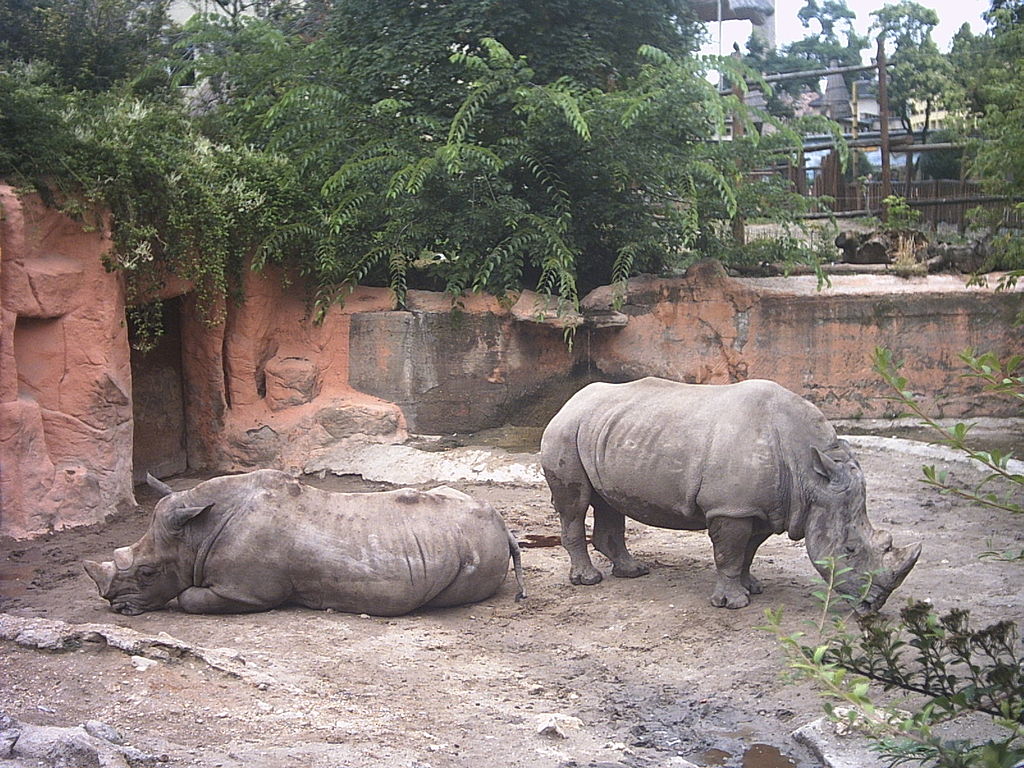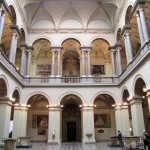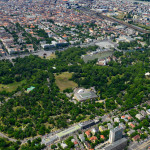
Fővárosi Állat- és Növénykert
Budapest Zoo & Botanical Garden (Hungarian: Fővárosi Állat- és Növénykert) is the oldest zoo park in Hungary and one of the oldest in the world.
It has 1072 animal species and is located within Városliget Park.
The zoo opened its doors on August 9, 1866. The park has 1–1.1 million visitors every year. The area is a nature reserve, and has some valuable art nouveau buildings designed by Kornél Neuschloss and Károly Kós . More than 1000 species are living there. Most special animals there are the Komodo dragon and from December 2011 the Wombat.
The Zoo is located in the city centre, can be reached by Line 1 (Budapest Metro)
Official city card (Budapest card) owner gets a 25% discount for a single ticket into the zoo.
History
The Budapest Zoo and Botanical Garden is one of the oldest in the world. The idea of the foundation dates back to 1820-30s but it opened only on August 9, 1866. It was an initiation of a group of patriots among others Ágoston Kubinyi, geologist József Szabó, Ágoston Kubinyi, the Director of the National Museum, József Gerenday, the Director of the Botanical Garden of Budapest and János Xántus, a zoologist, ethnographer and the first director of the zoo.
At that time the zoo displayed mainly Hungarian species and some rare species of monkeys, parrots, camels and kangoroos, among others. Franz Joseph and Queen Elizabeth donated a giraffe and other animals to the zoo. The first Lion house opened in 1876 with lions and tigers. An elephant, a hippopotamus and a rhinoceros joined later on.
However, the initial enthusiasm waned and popularity of the zoo decreased. The new animals were expensive and the expenses of the company founded by the patriots exceeded the revenues. The management hired entertainers and comedians and the corporation was transformed into an animal and plant naturalizing company.
In 1873 Károly Serák was mandated zoo director. He directed for more than 30 years and he managed to maintain the zoo. He hired several artists, such as fire eaters, sword swallowers and tightrope dancers in order to attract people. The revenues increased and the zoo was able to buy several special or rare animals, such as a hippopotamus and a Sumatran rhinoceros. The zoo housed about 2000 species. However, as the authorities increased the rental fee and the financial situation of the zoo deteriorated. The company went bankrupt after the Millenium in 1896.
Elephant House, Budapest Zoo
In 1907 the zoo was auctioned and taken over by the capital city, Budapest. Supported by the mayor of Budapest, István Bárczy and his city developing program, a complete reconstruction took place between 1909 and 1912. The zoo was reopened on 20 May 1912. The entertainers were separated from the zoo and a botanical garden was created. The historic buildings of the zoo are mainly from this time too. Adolf Lendl, a zoologist was mandated zoo director. The institution was one of the most modern zoos in Europe.
The development was interrupted by the First World War. The zoo was almost entirely destroyed in the Second World War. At the siege of Budapest the zoo was bombed and most buildings and animals were destroyed. After the siege the remaining animals were eaten by the starving people of Budapest. From 2000 specimen only 15 survived.
In 1945 the zoo reopened with a few dozen animals. The damage was restored slowly. In the 1950s and 1960s there was a major modernization. Between 1956 and 1967 the Director General of the zoo was dr. Csaba Anghi. Under his guidance the zoo became once again one of the most modern zoos of Europe.
In 1994 Miklós Persányi was appointed Director General. The historic buildings were reconstructed. The animal habitats have been modernized, enlarged and made to look more natural.
In 2007 the first rhinoceros ever to be born with artificial insemination was born in the zoo.
In 2012 the General Assembly of Budapest has decided, that the zoo will take over part of the Amusement Park’s territory and introduce Pony Park, a family game park and zoo.
On 14 February 2013 the zoo welcomed its first elephant calf since 1961.
In 2013 the zoo will acquire most of the Amusement Park’s territory and use it to display subtropical fauna and flora in a spacious glasshouse.
The Magical Hill
The newest attraction of the zoo is The Magical Hill, found in the Great Rock. It presents the diversity of flora and fauna, the evolving of the diversity and the relationship between humankind and nature. It features more than 100 species, interactive games and illustrative models.
America Tropicana
America Tropicana is the new name of the Palm-house. It presents the flora and fauna of the tropical climate American continent.
Savannah Zone
The Savannah Zone displayes giraffes, gazelles, white rhinoceros and many species of birds. The building also displayes small mammals and insects.
Australia Zone
Australia Zone is found next to the Great Lake. It displayes unique birds, reptiles and amphibians of Australia. The show rooms of the northern part of the house presents animals active at night in reversed lighting scheme. The Hillhouse is also a part of the Australia Zone. It displayes cassowaries, kangaroos and wombats.
India Zone
India House, the central building was built in 1912 by the plans of Károly Kós and Dezső Zrumeczky. It presents Indian lions, striped hyenae among others.
János Xántus House
The building named after the first director of the zoo represents the wildlife of South-East Asian flora and fauna.
Primates Near-at-Hand
The zoo shows especially many species of primates group though not definitely in the neighbourhood of each others. In the South-America House squirrel monkeys are on display. in the Xántus János house visitors can see Javan surilis. The Madagascar House houses ring-tailed lemurs, black and white ruffed lemurs, red ruffed lemurs, black lemurs, red-fronted lemurs well as one of Europa’s oldest Siamangs. The great ape house is home to the extremely endangered species of apes including 6 western lowland gorillas and 5 sumatran orang-utans. Visitors may also view a troop of hamadryas baboons, golden-bellied mangabeys, emperor tamarins, golden lion tamarins, red-handed tamarins, owl monkeys, wite-headed marmosets, pygmy marmosets.
You can see the complete source here
You should add a rate for this post:






 Previous Post
Previous Post Next Post
Next Post